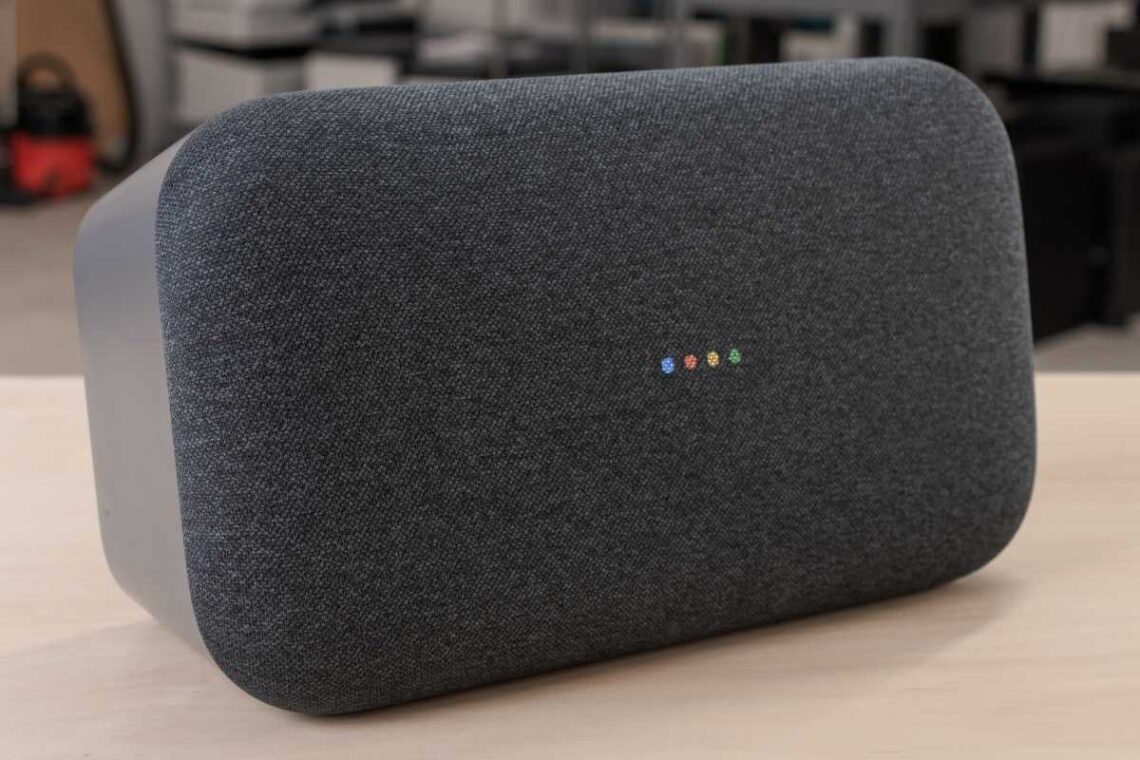This is the place where Google’s new $399 Google Home Max Charcoal speaker comes in. It’s the biggest (seriously, it’s huge) and most expensive smart speaker to date, and though it has all of the same smart features as the smaller Home and Home Mini, its real pitch is sound quality. This is the smart speaker that’s supposed to replace your home stereo and give Sonos a run for its money.
Google’s big, premium Apple HomePod rival the Home Max is finally being released in the UK today, bringing Google Assistant to the high-end smart speaker market.
Announced in October 2017 and on sale in the US since November, the Home Max joins Google’s smaller Home and smallest Home Mini smart speakers as the big one. Google Assistant sorts voice commands, controls and questions exactly the same as Google’s smaller smart speaker offerings, but the way it sounds couldn’t be more different.
The Google Home Max Charcoal design is inoffensive to the point of boring
The speaker is available in two colors, “Chalk” or “Charcoal”, which translate to white or black in non-marketing speak. Neither color is particularly striking and it’s not possible to customize the fabric grill on the front of the device. The Home Max echoes the design cues of Google’s other speakers, with rounded corners and soft lines, but at this size and price, it looks a bit blah to me. While a Home Mini can easily hide away in a corner, never to be seen, the Home Max is much harder to disguise. It’s an inoffensive design, but for something this substantial I wish it had a little more character.
One nice touch included with the Home Max is a rubber pad that sits under the speaker to help isolate its vibrations from whatever surface you put it on. The pad attaches to the Home Max via magnets and works whether you have the speaker in horizontal or vertical orientation. (The pad is not enough to make up for ill-advised placement, as my experience above shows. It’s just design to minimize vibrations and rattling.)
Most people will be happy with the Home Max’s sound quality
In a dual-speaker stereo configuration, the Max is even louder and more impressive, and it gets far louder than I can comfortably listen to. Google recommends placing the speakers about ten feet apart for the best stereo separation, so this is definitely not the ideal set up for a small room or apartment. But if you have the space, two Max speakers are better than one.
Though the Max can impress on its own, it doesn’t fare well in direct comparisons. In side-by-side tests with Sonos’ very similar Play:5, the Max is not as clear or crisp sounding and doesn’t have the same bass response. It’s almost as if the Max has a softening filter over the sound, which takes away some of the clarity and punch. The Play:5 does cost $100 more and doesn’t have any integrated smart speaker features (you need an Echo device somewhere in your home if you want to control a Play:5 with your voice), but there’s no denying that it is the better sounding speaker. My feeling is that if you never compare the Max to another high-end speaker, you’ll be thrill, but if you do, you might be unimpress with the Max’s sound.
Observations
- The dots in the middle switch orientation when you turn the speaker between vertical or horizontal
- You can also charge your phone from the USB-C port (but not quickly)
- Volume controlled via the buttons on your phone in the Google Home app adjust the volume by between 4 and 6%, which is strange
- Assistant will tell you if you’ve placed the Home Max upside down – it will still work though
- There’s a good level of granularity in the volume control, meaning you can easily get the volume just right
Price
The Google Home Max costs £399 and comes in two colours: chalk or charcoal.
For comparison, the Google Home costs £99, the Home Mini costs £39. Apple’s HomePod costs £319, the Sonos One costs £199 and the Sonos Play:5 costs £499.
Verdict
The Google Home Max is one big sound upgrade for Google Assistant, producing powerful, room-filling sound and booming bass.
While Google Assistant is the best voice assistant available right now, with the widest range of music services and most capable voice recognition and understanding, the Home Max doesn’t quite match the exquisite audio produced by the likes of the Apple HomePod or Sonos Play:5.
If you want a speaker to blast out music at a party or in the kitchen, the Home Max is brilliant. If you want a top-end living room listening experience to replace a great hi-fi, then at £400 this isn’t quite there yet.
How does it perform?
Even though every modern device contains a Digital Signal Processing system, all-in-one, box speakers are a set of certain compromises with audio quality. In this regard, Google Home Max performs slightly superior in camouflaging its drawbacks as compared to others. As to any other speaker, it requires some fine-tuning to offer the best performance – I turned up bass slightly and stayed away from maximum – yet, it is one of the rare models that sound good with most of the orchestras. Compared to the Sonos Play:5 a wonderful dance/rock speaker, Google Home Max Charcoal had a less boxed and more ambient sound.
Conclusion
However, if sound quality is your ultimate priority and you’re not marry to Google’s music services, you’ll probably be happier with a Sonos Play:5. It’s more expensive and doesn’t have the integrated smarts, but the Sonos app supports more audio sources and just sounds better than the Home Max. The Sonos integration with Alexa through an Echo device also offers voice control for Spotify, Pandora, Amazon Prime Music, and others.

